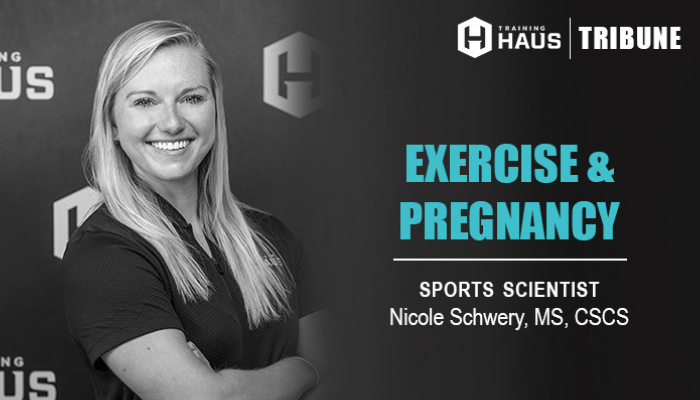
Exercise & Pregnancy
9 out of 10 women will have children at some point in their lives. It is important to understand how the trauma of pregnancy and birth affects the female body, as much as how to heal from it. Currently, moderate-intensity physical exercise during pregnancy is considered safe, but less than 20% of healthy pregnant women meet the minimum exercise recommendations of at least 30 mins/day (Perales 2016, Pivarnik 2006).
During pregnancy, hormones released cause ligaments and tendons to become lax, placing stress on the body. With these changes, the likelihood of pelvic pain, low back pain, and sciatica is increased.
Exercise, including Pilates and strength training, have been found to improve labor outcomes and post-natal recovery. Additionally, exercise has been shown to have a positive effect on the long-term health of mothers and babies (Pivarnik 2006, Poudevigne 2006, O’Connor 2011).
2 Essential Methods of Exercise During/After Pregnancy
1. Pilates
These are low-impact exercises aimed to connect the mind and body using a floor mat or a variety of equipment. Pilates teaches body awareness, best defined as flexibility with strength and control. During pregnancy, Pilates strengthens the inner core unit helping to reduce pain and effort needed to give birth (Rodriguez-Diaz 2017). Alternatively, during the post-partum period, rebuilding the core is essential to avoid pelvic floor dysfunction, low back pain and other conditions associated with birth trauma.
2. Strength Training
Extreme changes in hormones during and after pregnancy theoretically could increase the risk of musculoskeletal injury due to loosened tendons and ligaments. Therefore, strengthening the body as a whole is important for decreasing the risk of injury during and after pregnancy. It has been shown that low-to-moderate intensity strength training during pregnancy did not cause any musculoskeletal injuries and has been shown to improve post-delivery outcomes and lower depression among individuals (Perales 2015, Huang 2011, Sagedal 2017, Chiarello 2005, Thabet 2019). Typically, many pregnant women hear and read to “never work on their core during pregnancy” and avoid crunches, planks and lifting. However, there is research today that favors the importance of core training combined with whole body strengthening. Strength training can provide a good foundation for bone and joint health, allowing women to be more successful during birth and in post-natal recovery.
Final Thoughts
There is some lack of education and confusion about exercise and pregnancy. Pilates and strength training have been shown to be safe and valuable forms of exercise during and after pregnancy. Both forms of exercise have proven to have benefits for both mother and baby. If you want to find out more about the Women’s Health Small Group Training program at Training HAUS, contact Nicole at [email protected].
*Please consult your doctor before beginning these exercise forms if pregnant*
– Nicole Schwery, MS, CSCS | Sports Scientist
Sources
1. Bureau USC. FFF: Women’s History Month: March 2017 [Internet]. [cited 2021 April 17]. Available from: https://www.census.gov/newsroom/facts-for-features/2017/cb17-ff03.html
2. Perales, M., Santos-Lozano, A., Ruiz, J. R., Lucia, A., & Barakat, R. (2016). Benefits of aerobic or resistance training during pregnancy on maternal health and perinatal outcomes: A systematic review. Early human development, 94, 43-48.
3. Pivarnik, J. M., Chambliss, H. O., Clapp, J. F., Dugan, S. A., Hatch, M. C., Lovelady, C. A., … & Williams, M. A. (2006). Impact of physical activity during pregnancy and postpartum on chronic disease risk. Medicine & Science in Sports & Exercise, 38(5), 989-1006.
4. Poudevigne, M. S., & O’Connor, P. J. (2006). A review of physical activity patterns in pregnant women and their relationship to psychological health. Sports medicine, 36(1), 19-38.
5. O’Connor, P. J., Poudevigne, M. S., Cress, M. E., Motl, R. W., & Clapp, J. F. (2011). Safety and efficacy of supervised strength training adopted in pregnancy. Journal of Physical Activity and Health, 8(3), 309-320.
6. Rodríguez-Díaz, L., Ruiz-Frutos, C., Vázquez-Lara, J. M., Ramírez-Rodrigo, J., Villaverde-Gutiérrez, C., & Torres-Luque, G. (2017). Effectiveness of a physical activity programme based on the Pilates method in pregnancy and labour. Enfermería Clínica (English Edition), 27(5), 271-277.
7. Perales, M., Refoyo, I., Coteron, J., Bacchi, M., & Barakat, R. (2015). Exercise during pregnancy attenuates prenatal depression: a randomized controlled trial. Evaluation & the health professions, 38(1), 59-72.
8. Huang, T. T., Yeh, C. Y., & Tsai, Y. C. (2011). A diet and physical activity intervention for preventing weight retention among Taiwanese childbearing women: a randomised controlled trial. Midwifery, 27(2), 257-264.
9. Sagedal, L. R., Øverby, N. C., Bere, E., Torstveit, M. K., Lohne‐Seiler, H., Småstuen, M., … & Vistad, I. (2017). Lifestyle intervention to limit gestational weight gain: the Norwegian Fit for Delivery randomised controlled trial. BJOG: An International Journal of Obstetrics & Gynaecology, 124(1), 97-109.
10. Chiarello, C. M., Falzone, L. A., McCaslin, K. E., Patel, M. N., & Ulery, K. R. (2005). The effects of an exercise program on diastasis recti abdominis in pregnant women. Journal of Women’s Health Physical Therapy, 29(1), 11-16.
11. Thabet, A. A., & Alshehri, M. A. (2019). Efficacy of deep core stability exercise program in postpartum women with diastasis recti abdominis: a randomised controlled trial. Journal of musculoskeletal & neuronal interactions, 19(1), 62. PILAES

